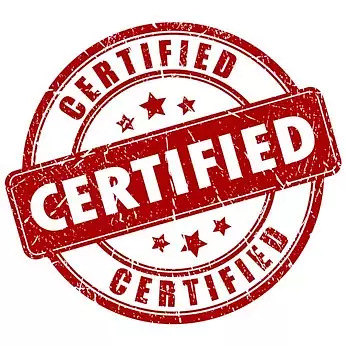 Driving a forklift truck without certification is against the law. But, the number of people who apply for jobs, claiming they are accomplished forklift truck operators, might surprise you. You need a wallet card as proof of certification (which you must keep with you at all times to comply with OSHA regulations), to protect you and your coworkers, and to reduce your employer’s liability.
Driving a forklift truck without certification is against the law. But, the number of people who apply for jobs, claiming they are accomplished forklift truck operators, might surprise you. You need a wallet card as proof of certification (which you must keep with you at all times to comply with OSHA regulations), to protect you and your coworkers, and to reduce your employer’s liability.
Certification
Large companies generally train their own forklift operators. Some community colleges and trade schools offer lessons, however, and you can take courses at online universities or downloaded directly from the OSHA website.
You are expected to read and study the OSHA rules, and then take the test online. A grade of 70% or better is needed in order to pass. When you pass, you earn a certificate, which can be printed from the training website, and you should have your physical wallet-sized license within three business days. This card is valid for three years, at which time you must be re-evaluated.
Evaluation
Certification is only the first step. After certification, there is usually an on-the-job evaluation process. The employer must be certain you can operate the truck correctly and conscientiously – in any work environment. In other words, you need to show you can operate the employer’s trucks to do the boss’s tasks.
Train for the truck
Businesses have seen drivers come and go. Often it is because the new hire thinks that just because s/he can drive one truck, he/she can drive any truck. Employer training on specific trucks such as cantilevered, counter-balanced, high-lift platform, reach rider, narrow-aisle rider trucks, and many more is required, to prove that even though you can drive a small truck around your uncle’s junkyard, you can also handle trucks in industrial environments. The small shop may have a pallet lift that might be used for other purposes as well. But, the employer – who worries about the safety of property and workers – has higher standards. They want you trained to their trucks and their needs.
• Inspections
Forklifts should be inspected according to a checklist at the start and end of each shift. If there is a problem with the truck, the next shift drive must be alerted to it.
• Environment
Drivers need to memorize and inspect their truck routes for obstacles and hazards. On a warehouse or production floor, things are rarely the same from one day to the next.
• Capacity
The driver must know the load capacity of the truck, which varies from truck to truck. The load must be balanced and stable, with elements positioned as symmetrically as possible. Position the load so you have maximum visibility if you do not have a partner or associate to clear the way. Always cross pedestrian areas and blind spots with care, honking the horn, and slowing down.
• Safety rules
Rules and regulations must be posted and should be on the driver’s mind at all times. The driver must wear the protective gear provided, obey speed limits, use seatbelts, and carry passengers only as permitted.
In time, the ambitious forklift truck driver realizes how important each experience means to his/her resume. Documented experience using different types of trucks will enhance your resume and make you a more attractive recruit. But having multiple truck experience is not enough – continuing education is equally important. And if you expect to lead or supervise other drivers, you need to show determination to earn more than certification
